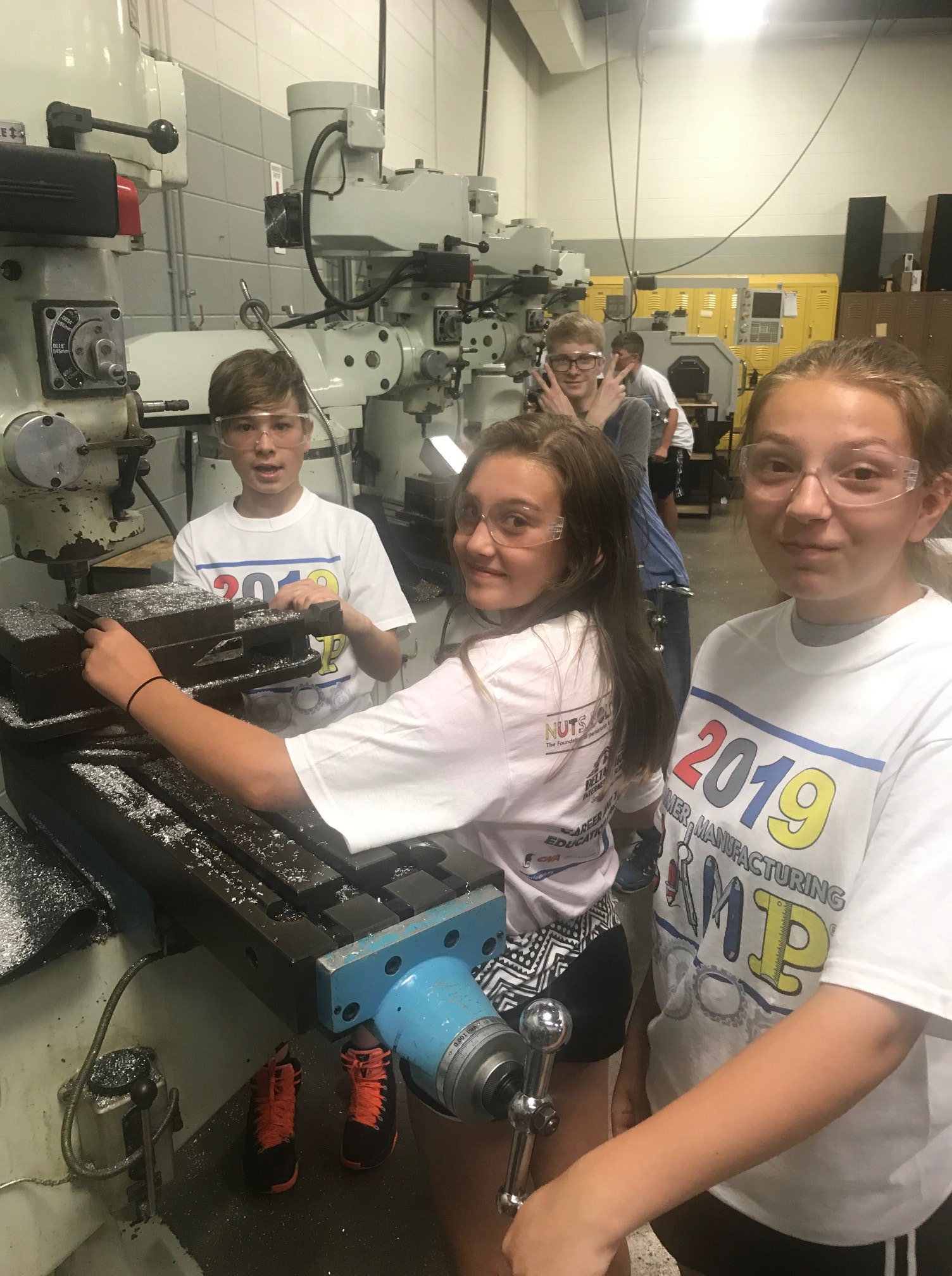Far north on Michigan’s Upper Peninsula, eighth-graders attend a weeklong Careers in Technology summer camp that gets them thinking more seriously about what they want to be when they grow up.
Students spend three hours per day at the Delta-Schoolcraft Career Tech Center changing motor oil and rotating tires, learning basic welding, and making key fobs with a computer numerical control mill.
“There are very few schools here with any type of shop class or health class,” says Trent Bellingar, the career and technical education director in the rural Delta-Schoolcraft Intermediate School District. “We want to introduce these kids to careers as young as we can, so they’re more educated to make these choices later on.”
About 45 students participated in this past summer’s program, which was funded by grants from the Manufacturers & Fabricators Association, International’s Nuts, Bolts & Thingamajigs foundation; the Hannahville Indian Community; and the Community Foundation for Delta County.
During the school year, eighth-graders take tours of the tech center, where they have hands-on experiences. They have learned the Heimlich maneuver and used a computer program to draw product prototypes, among other activities.
Middle school CTE courses focus on careers
Programs such as Delta-Schoolcraft’s summer camp are among the many ways district leaders are encouraging younger students to explore career possibilities.
Middle school counselors can play a key role in helping students plan the paths they will take in high school, says Chaney Mosley, a regional vice president of the Association for Career & Technical Education and former CTE director for Metro Nashville Public Schools in Tennessee.
“Students can also begin to understand how much money they will need to earn to sustain the lifestyle they want to have, and connect that with the earning potential of careers,” says Mosley, currently an assistant professor at Middle Tennessee State University.
Read more: DA op-ed—Let’s lead in career education
Middle schools now offer CTE courses in which students rotate every few weeks through different career sectors, such as engineering, business, agriculture and culinary arts. “Without an exploratory course, unless they’ve had exposure to an industry at home, they’ll be making decisions based on emotions,” Mosley says.
North of Seattle, the Edmonds School District ties its popular middle school CTE elective to the region’s vibrant engineering and manufacturing industries. Students learn the basics, such as the engineering process, structures and materials, and how to begin using computer-aided design technology. This positions them to take preparatory CTE courses in high school, particularly in the district’s engineering and manufacturing magnet program, says Mark Madison, the CTE director.
The coursework is also tied to the school’s Technology Student Association, which competes in local, state and national skill challenges. Edmonds’ Brier Terrace Middle School won first place in a national competition in 2019.
“Engineering teaches a way of thinking and a way of approaching problems that is applicable to multiple fields, such as business, medicine, computer science and teaching,” Madison says.
‘I’m going to need your help’
Middle schoolers in Anne Arundel County Public Schools in Maryland can take an Advancement Via Individual Determination (AVID) program elective that allows them to work on soft skills, such as time management, proper study habits, note taking and self-advocacy.

The program is oriented toward low-income and underrepresented students. It also consists of regular tutoring sessions in which students can help each other with academic work as they prepare to take honors and AP classes in high school, says Dorothy Arida, the AVID coordinator.
AVID students also practice public speaking, write extensively and research colleges and careers. Nearly 90% of AVID students earn high school credit while in middle school, and most take more challenging courses when they get to high school, Arida says.
When it comes to graduation, some 463 high school seniors in the 2018 AVID program earned $43.9 million in college scholarships and financial aid. And 87% of those students were accepted to a four-year college.
“The typical AVID student is right in the academic middle,” Arida says. “We want the kid who’s reaching, who’s upping their rigor, and who says to their teachers, ‘OK, I’m going to need your help.’”







